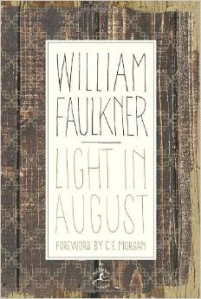Fuzzy Buzzy Bees by Delilah Smith
Staying home to recover from a nasty wrenching of my knee, I was just thinking that my knee was starting to feel better when I noticed the first uninvited guest in the dining room. I opened the French door and he quickly took flight at first notice of the free air. However, two hours later, I found myself functioning as a bell-boy (or rather bell-girl) at a busy hotel; as fast as I could sweep one bee out of the door, four or five would take his place. Those released simply created a merry-go-round of sorts as they joined the swarm of bees flying outside of my dining room windows, awaiting their turn to alight on the cypress wall and climb through a crack into the space inhabited by their queen. I was quickly being overrun by their little pesky demands. This was the beginning of my experience with having a hive-on-the-move decide that the space above my dining room would be a perfectly cozy place to start a hive.
Such a close encounter with bees is bound to inspire a writer to reflect on it and wonder at the myriad of ways these tiny creatures have inspired other writers.
Finding a Home for the Queen by Neill Ketchum
Bernard Mandeville’s controversial poem, The Fable of the Bees: Or Private Vices, Publick Benefits quickly comes to mind. In the spirit of his utilitarianism, perhaps I should view their rather rude intrusion by its consequences rather. The means justifies the ends, so-to-speak.
Traditionally bees have symbolized royalty and the productivity of well-governed industry. Mandeville’s poem capitalized on this cultural meaning. Scientists now view the hive as operating as a complex organism with the varied types of bees acting as similar to differentiated cells. I can see how the queen bee threatened to usurp my sovereignty in this space. I do not think we could share the same space. Napoleon admired the bee’s might, as he made the bee his personal symbol.
Despite the invasion, the bees did not display any aggression. Truly, I was surprised by their restraint. Indeed, I pitied the little beings, finding themselves in harm’s way by entering my home. Unintentionally I injured several in my attempts to return them outside. After consulting the local beekeeper, I was also disheartened to learn that his only suggestion was that I must use pesticides to desist their homemaking above my dining room. I wanted to have the beekeeper save the hive, but he felt the height off of the ground and the location within the wall to be too dangerous. Twenty-four hours after dusting the exterior cypress boards as instructed, the bees simply vanished. In the quiet peace of their absence, I felt powerfully affected by this close encounter.
In my guilt over resorting to pesticides, I began to research further on the meaning of bees, and I found that bees have long been associated with the soul. Ancient pagans viewed bees as emanating from divine beings, such as the goddess Artemis. Other records indicate that bees may have once represented the primordial Chaos. Indeed, new souls were thought to arrive via bees, and it was documented that souls were seen to exit person’s bodies in the form of bees. (I’m thinking of scenes from The Green Mile and Beloved). Perhaps these beliefs were a result of early apiculture, or beekeeping. Regardless, ancient people honored and respected bees. Bees are important figures in fables, serving as messengers of the gods. Honey was believed to be food from heaven.
The bees that invaded my home had left their previous home in a tight colony, and set out into the enormity of the world to find a new home. This is the way that bees reproduce hives, but in my case, despite being surrounded by woods, they mistook my home for a hollow tree. In our time their habitat is being continually diminished by development, and their health and survival threatened by human activities.
Not only did bees inspire people in antiquity, their continued meaningfulness is evident in literature. Two recent examples just off the top of my head–Gene Stratton-Porter’s The Keeper of the Bees (1991) and Sue Monk Kidd’s Secret Life of Bees (2003) are two highly acclaimed novels that feature beekeeping. Bees are mentioned in numerous poems. I found a list of them at Hive Minded.
I’m intrigued, too, by the connection that bees have to trees. Trees and bees are seen as expressions of nature. More and more, we are realizing that the survival of human beings are intimately interconnected with the survival of bees and trees. I just finished reading Jean Shinoda Bolen’s Like a Tree and applaud her efforts to encourage tree activism. As a fellow “tree person,” I can relate to her spiritual connection to trees. In the face of a looming ecological disaster, meditation among trees is not enough. Truly the survival of trees and bees are interconnected. Many trees reproduce through flowers that depend upon bees collection efforts in order to achieve pollination. The hollowed out places in trees provide homes for bees.
Organizations such as Pollinator Partnership seek to protect bees through conservation, education, and research. The work of Michael Thiele at Gaia Bees especially interests me because of his emphasis on changing the paradigm of relationship between human beings and bees. Thiele calls for a bee-centered approach to beekeeping, as well as approach toward bees as teachers for humans, and as inspirations for spiritual renewal.
In conclusion, I offer appreciation to the bees who entered my home. In a way, I see their intrusion as a wake-up call, a motivating action for us to do more to accommodate their needs. After all, since honeybees are a keystone species, shouldn’t we be deferring to them, rather than the other way around?










